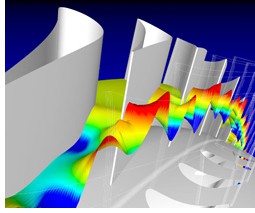Smarter robots may replace Soldiers
Unmanned robots already have proven their worth on the battlefield, neutralizing IEDs, and more capable ones are coming in the future, according to the commander of U.S. Army Training and Doctrine Command.
While robots and unmanned platforms will continue to provide valuable assistance to Soldiers on the battlefield, there may even come a day when they can begin replacing Soldiers, Gen. Robert W. Cone told reporters at Association of the United States Army’s Aviation Symposium, held earlier this month.
Cone’s remarks sparked further discussion at a Jan. 22 media roundtable, co-hosted by the College of William & Mary and U.S. Army Training and Doctrine Command, held on the campus of W&M.
Discussions focused on a range of other issues as well that came out of this month’s Strategic Trends Seminar, which looked at challenges and opportunities that will test the force in the coming years and decades.
The Army already has teamed Apache helicopters and unmanned aircraft in Afghanistan so “there’s a potential to augment that capability and in some cases and under specific circumstances to replace manpower,” said Maj. Gen. Bill Hix, deputy director, Army Capabilities Integration Center.
Dismounted ground robots are already assisting Soldiers, much in the way a bird dog provides extra eyes and ears and a keen sense of smell for a hunter, Hix said, borrowing an analogy.
“That’s an additive capability that makes a Soldier that much more effective because the robot may carry additional munitions or logistics and even sensors that allow him to focus more on mission tasks and not deal with what’s sometimes called dirty, dumb, dangerous and repetitive tasks,” he said.
There might even be convoys that are principally unmanned in the future, he continued, with some oversight by Soldiers. Convoys in Iraq, Afghanistan and Pakistan were often the target of attacks by insurgents using IEDs and small-arms fire.
The integration of robotics into all of the capabilities the Army brings to the table was the focus of Soldiers, scientists and academia at the Strategic Trends Seminar, said Col. Chris Cross, chief of Science and Technology, Army Capabilities Integration Center, or ARCIC.
“It’s hard to conceive that we’ll fight a fight in 2035 without the integration of some type of unmanned combat platform,” he said, referring to the thoughts of scientists and academia at the seminar.
Cross, who has a doctorate in nuclear physics, agreed with Hix regarding convoy duty for robots, adding that this capability could be added “fairly quickly” with tethered or untethered robots. Tethered robots are controlled by a wire and untethered is wireless controlled.
Besides performing physical tasks that are dumb and dirty, Cross expects that future robots will be able to assist Soldiers in the decision-making process.
The science and technology community is looking at a range of options to provide to Army leaders for future planning purposes, Cross added.
“We will fight against robotic platforms in the future that are either autonomous or semi-autonomous,” he said. So it’s not just how robots will be integrated into the force, it’s also how the Army will deal with enemy robots.
When it comes to the autonomous decision-making capability of robots, there was a great discussion at the seminar about the levels of responsibility, said Col. Kevin Felix, chief, Future Warfare Division, ARCIC.
The technology is already here for robots, but there needs to be more discussion and consensus on the ethics of it, he said. That discussion will have to be done at the national level.
And, he added, adversaries “won’t necessarily play by the same rules that we play by.”
Also, as more robotic systems are brought in, there are a host of other things to consider as well, like procurement and sustainment costs, he said.
Human enhancements — things that allow Soldiers to lift more and augment the senses — while not strictly robotic, are also on the horizon, Felix predicted, adding that this was discussed at the seminar.
Despite the budget squeeze, the Army needs to continue to invest in science, technology, research and development so it’s better prepared for the next war, Hix said.
That the Strategic Trends Seminar was held on the campus of W&M with scientists and academia present was good for the Army, he added, because they offer a unique perspective.
It’s fortunate that TRADOC is located so close to the W&M campus in Williamsburg, Va., added Dr. Jim Golden, vice president, Strategic Initiatives, W&M.
There’s a large area of intersection between the research being done at the college and that being done by Army planners, Golden said. W&M can offer the Army its analysis of topics like neuroscience, cultural and societal trends that might shape the environment 30 years out that the Army might want to take into consideration when planning, he said.
Hix said TRADOC is also partnering with the intelligence community to determine where opponents are investing their money in robotics, electro-magnetic and cyber warfare and other capabilities.
“It’s not inevitable that we’ll be over-matched by future adversaries,” he said, “But we don’t want to face that prospect.”
Source : US Army


